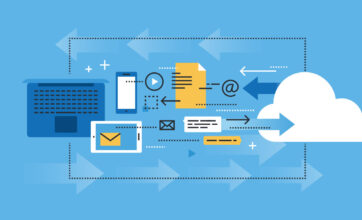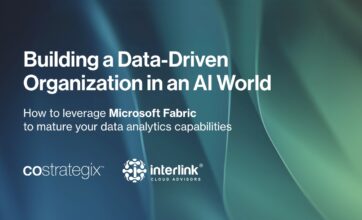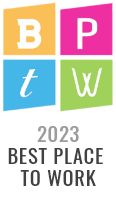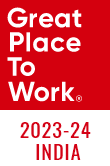Considerations for Movingto Microsoft Fabric
- 5 minutes read
As organizations continue to seek flexible, scalable data solutions, Microsoft Fabric has emerged as a key player in the modern data ecosystem. In this blog, we’ll explore whether Microsoft Fabric truly lives up to the promise of a data fabric architecture, highlight the unique features it offers, and guide you on how to experiment with it before fully committing.
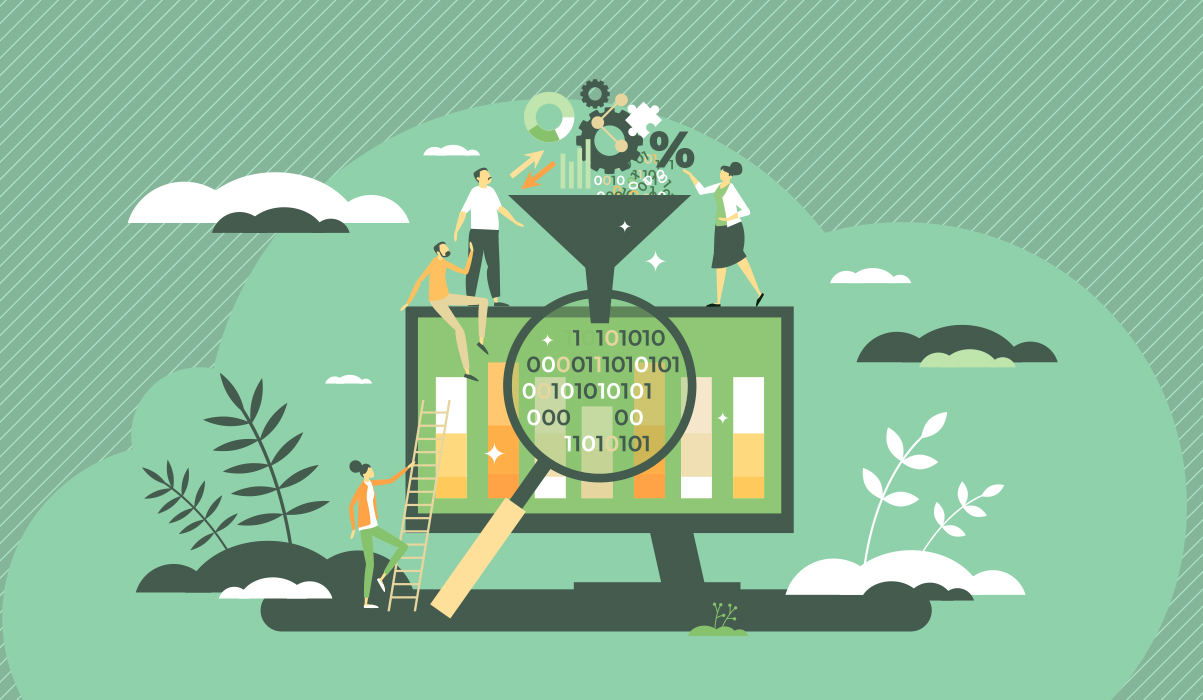
Microsoft Fabric became generally available in November 2023 and represents a fundamental shift in Microsoft’s vision from a composable data and analytics architecture to a pre-integrated data and analytics platform and ecosystem. If you’re an Azure Data Platform user, whether and when you should make the leap to Microsoft Fabric can be a hotly debated question. In this article, we answer some of the common questions that we hear from our clients.
Is Microsoft Fabric a True Data Fabric Architecture?
Before we answer this question, let’s align on what the goal of a data fabric architecture is. For our discussion, we will use Gartner’s definition: The goal of a Data Fabric Architecture is to support data access across your business through flexible, reusable, augmented, and sometimes automated data integration.
Data fabric has emerged as a solution to the common challenge of collecting, connecting, integrating, and delivering data from dispersed data sources to the users who need it. Though data fabric is not a mature technology and no single vendor currently delivers all data fabric components, its potential benefits apply to different parts of the organization:
- Business units: Enables non-technical business users to quickly find, integrate, analyze, and share data
- Data management teams: Delivers productivity advantages through automated data access and integration, as well as increased agility, for data engineers – resulting in faster delivery of data requests
- Overall organization: Delivers faster time to insight from data and analytics investments, improved utilization of organizational data, and reduced costs through insights on effective data design, delivery, and utilization
Microsoft Fabric, on the other hand, is a product name. It is not a data fabric in the strict sense of the definition. Previously, Microsoft Fabric looked like a data hub with enterprise data pulled into a data lake for availability to the organization – in short, just a new wrapper on Synapse. With all the work Microsoft is building into its data fabric offering, however, now you can achieve many of the goals of a true data fabric architecture with less data engineering – bringing impactful insights more efficiently.
What’s Different About Microsoft Fabric?
What makes Microsoft Fabric truly different is that it is available at the Microsoft level, where Azure and the cloud are abstracted. With one Fabric capacity purchased, your organization gains access to all the Data Platform tools, including:
- Data Lake and Lakehouse (Blob Storage Gen2 and virtual data warehouse)
- Data engineering (Azure Data Factory and Spark)
- Data warehousing (Synapse SQL)
- Machine learning (Synapse Data Science and SynapseML)
- Business intelligence (Power BI)
It offers new features not previously available, such as Copilot and Data Activator.
Plus, Microsoft is expanding its footprint to include multi-cloud capabilities for data residing on Amazon Web Services (AWS), Google Cloud Platform (GCP), and Snowflake via Shortcuts and Mirroring (Preview).
How Can You Test the Waters with Microsoft Fabric?
You can take a first step into Microsoft Fabric by mirroring your reporting data and reconnecting Power BI reports. This is a common reporting architecture to mirror the transactional databases or build a reporting database. This offloads the load of running queries from the source systems. To get started with Fabric, we can take the same approach by not migrating data but mirroring the databases needed by the reports. Then point the reports to the new Fabric data source. All Fabric capacities support mirroring databases. Please be aware that there are some limitations for the number of tables, Row-level security, Object-level permissions, and others which need to be considered.
The diagram below illustrates the small Fabric environment that allows your data analysts and business intelligence analysts to work with the data and build Power BI reports. (Note: when a Power BI report is published, the PBIX file is separated into a Semantic Model and a Report within the cloud.)
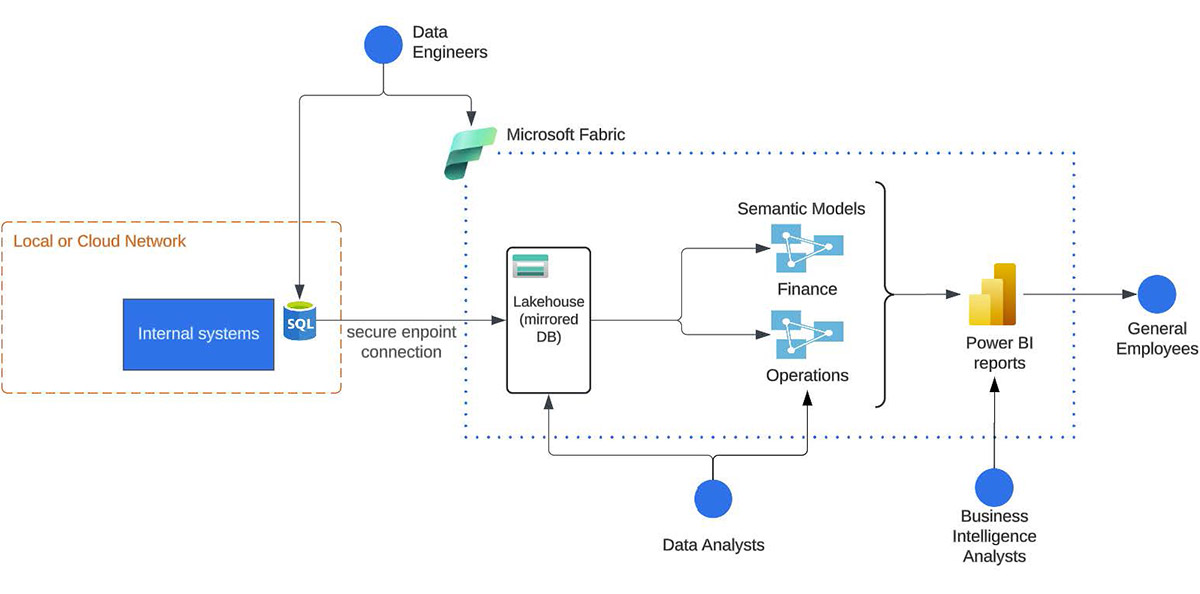
Because Microsoft Fabric is a low-code/no-code solution, your dependency on data engineers will be reduced. In this case, they simply establish the database mirroring and then hand off the environment to the analysts.
This establishes a first step to building a new Data Analytics workspace with Fabric. Over time, your Microsoft Fabric environment may grow when your business starts asking for more analytics. You may need to re-establish data pipelines to other internal applications and external systems. Or you may need to start building new data products and extracts.
What Are Its Limitations?
Microsoft Fabric can’t do everything, at least not yet. So you still have the option for your data engineers to utilize Azure resources. This is especially true for the integration with external systems that require specific networking or order technology to connect. The below diagram shows a more advanced architecture with the following attributes:
- Data is organized in a medallion 3 zone architecture
- Data is ingested with Fabric pipelines for common data connections
- Data is pulled into a Fabric landing zone for complicated data connections
- Semantic models are created to support 1-to-many reports
- Power BI reports are embedded in customer-facing applications
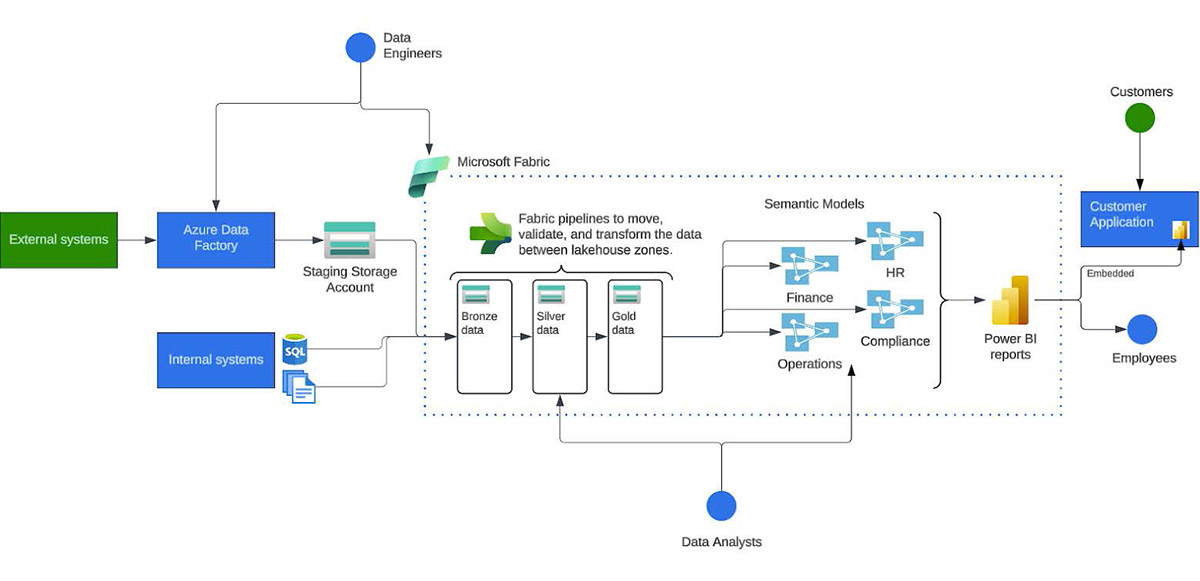
Microsoft Fabric is Kinda New. Is That A Concern?
Yes, Microsoft released its Fabric offering in November 2023. However, it is built on the same tools within Azure – Blob Storage Accounts gen2, Data Factory, Power Query, SQL Pools, Spark compute, etc. It also introduces new tools – such as the Microsoft OneLake for organizing and governing data, a Lakehouse data model, and a Data Activator toolset.
- Concerned about source control of your reports? Now in preview
- Concerned about CI/CD? Supported now
- How about SOC compliance? Which one do you need?
What is the Impact on Power BI Users?
Based on proven Power BI technologies, Fabric aims to offer richer and more advanced analytics capabilities beyond conventional Power BI offerings:
- AI-enabled Microsoft Copilot experience for analytics
- Direct Lake semantic model
- Facilitate collaborations
What Are the Cost of Ownership Considerations?
Pricing for Microsoft Fabric will depend on how much work is needed for the organization. A subscription for up to 4 people will cost around $500/month – a pretty inexpensive way to learn, experiment, and make an informed decision based on your unique situation. Organizations may need to resize the capacity required for increased data pipelines, analytics workloads, and data visualizations. Also, you can get reserved pricing to pay in advance and save your organization a considerable chunk vs. pay-as-you-go.
CoStrategix is a digital transformation services company that helps organizations build and modernize data ecosystems that are custom for their business goals and specific environments. If you are looking for strategic guidance on how to consider Microsoft Fabric as part of your ecosystem, let’s have a conversation.
AI Strategy & Solutions – Elevate your business with advanced analytics
Data & Insights – Drive insights that lead to competitive advantage
Product Development – Build platforms that power unique digital capabilities
Platform & Technology Modernization – Modernize for stellar experiences, efficiency, and AI
Related Blog Posts
The Future of SSRS, SSIS, and Microsoft Fabric
August 15, 2024
Building a Data-Driven Organization for an AI World
February 4, 2025
9 Data Catalog Capabilities You Should Know
June 25, 2024
Composite AI: The Smarter Way to Navigate AI Complexity
March 4, 2025
